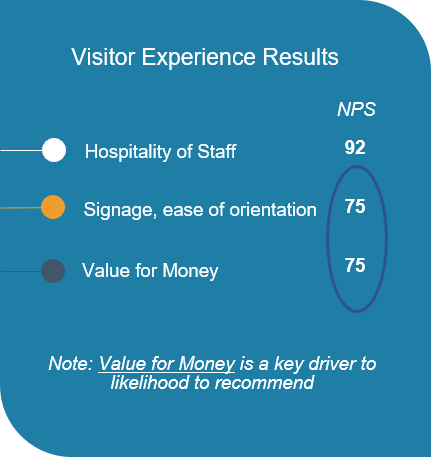This article originally appeared in the August 2020 newsletter as a guest article by James Sauter, Partner and Co-Founder, Rove Marketing, Inc.
We have preliminary insights from Rove Marketing’s COVID Response Satisfaction Program to share.
Whether you are already open or are planning your reopening, listening to visitors feedback and remaining flexible in adapting measures is the key to winning consumer confidence.
What is the most important COVID safety protocol? What did first time visitors think of their experience? Understanding visitor expectations and perceptions is more important now than ever. Continual visitor feedback not only generates valuable insights but also demonstrates that you care and want to create a safe experience for your visitors.
Rove Marketing, in collaboration with MANY and NYSTIA, launched a low-cost survey solution designed to help museums monitor visitor feedback on safety and satisfaction of their experience. Data is collected at the state level so museums can benchmark their performance against state averages. Members are encouraged to participate in the program, and it is not too late to register.
As restrictions are lifted and tourism re-opens, museums will need to win consumers’ confidence by balancing new COVID safety measures while delivering a great experience. Their ability to meet expectations will be key to accelerating the recovery.
Here are the top 5 insights from the data collected this far:
1. Visitors list hand sanitizer pumps and physical distancing as the biggest areas to improve on.
When asked what COVID measures museums can improve on, the top two answers were to add more hand sanitizer pumps and have better physical distancing protocols.

2. First time visitors are more difficult to satisfy
When looking at key measures such as a visitor’s intention to recommend (their Net Promoter Score), meeting expectations on safety, and value for money, first time museum visitors are scoring New York State museums lower compared to repeat visitors.

*Refer to the footnote following this article to learn more about the Net Promoter Score.
3. Younger consumers are more challenging to please
Consumers aged 35 and younger are less likely to recommend, have higher expectations on safety measures, and see lower value for their money compared to consumers aged 35 and older.

4. Consumers say the staff is great but ask for better signage and more value for their money
Across the state, museum staff are getting top grades for hospitality. But visitors generally find there is room to improve on signage and value for money. Value for money is the number 1 driver of a strong Net Promoter Score – intent to recommend.

5. Consumer expectations are getting higher with time
The statewide museum Net Promotor Score is an impressive 82. However, since late July this number has dropped to 79 – suggesting that as we acclimatize to the new COVID reality, consumers expectations are increasing over time putting more pressure on museums to do more.

Many of the leading museums across the state, large and small, have registered to participate in the program. Museums such as the Baseball Hall of Fame, the Strong, the Wild Center, Intrepid, Fort William Henry Museum, Waterville Historical Society, and the Long Island Children’s Museum to name a few are benefiting from real time visitor data to improve their experience.
“The information we've collected with the help of Rove Marketing has been invaluable over the past 5 months. In a time of uncertainty, the survey result data has helped The Wild Center make informed decisions on the fly. It has helped us make strategic marketing decisions and change on-site operations to provide a more satisfying experience for our guests.”
-The Wild Center
It is easy to register. Simply complete the online registration form here to start collecting data on your museum.
Or for more information, please contact james.sauter@rovemarketing.ca.
The Net Promoter Score aims to measure the loyalty between a customer and company. It is based on the simple question: How likely is it that you would recommend our company to a friend or colleague?
The Net Promoter Score is calculated as the difference between the percentage of Promoters and Detractors. The NPS is not expressed as a percentage but as an absolute number lying between -100 and +100. For instance, if you have 25% Promoters, 55% Passives and 20% Detractors, the NPS will be +5.
